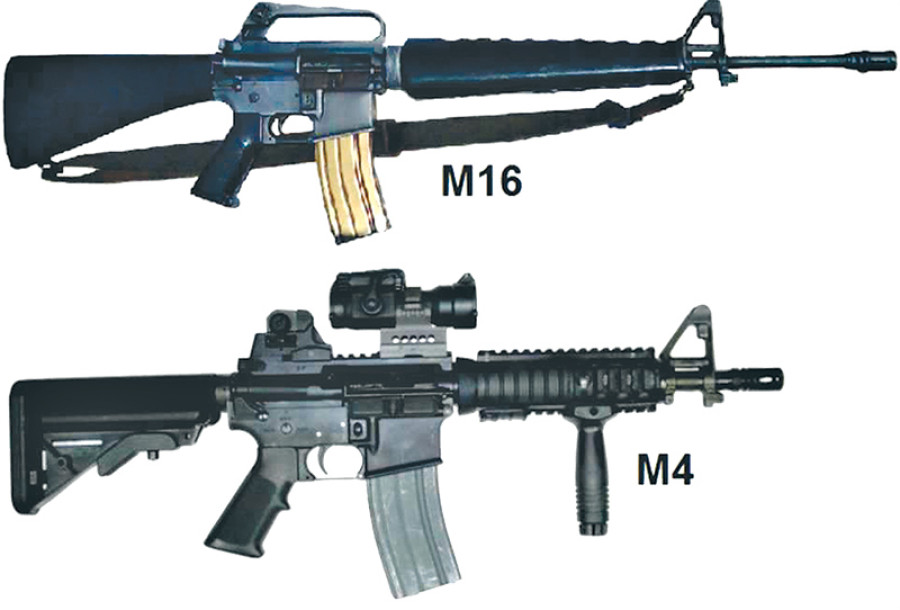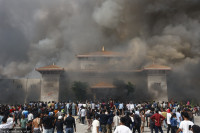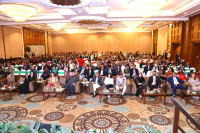Valley
Differences over pay modality delay Army’s bid to buy US rifles
Nepal Army’s bid to procure lethal rifles from the United States has been delayed after the US government demanded the entire payment in a single sum, which is against Nepal’s procurement law that allows payments only in three allotments.
Binod Ghimire
Nepal Army’s bid to procure lethal rifles from the United States has been delayed after the US government demanded the entire payment in a single sum, which is against Nepal’s procurement law that allows payments only in three allotments.
The Army is planning to acquire M4 and M16 rifles to equip its squads deployed as blue helmets in 12 war-torn countries. The Ministry of Defence has already endorsed the plan, allowing the Army to procure the arms from the US Army. As two variants of the rifle are produced only by the US government, open bidding is not necessary for the procurement.
These arms can be obtained directly through government-to-government dealing. Though the US side is ready to supply around 5,000 rifles as requested by the NA, differences in the mode of payment are delaying the deal.
The US Army has demanded the entire payment before delivering the rifles but the Nepali side says it is bound by the law not to pay the amount at one go.
The Public Procurement Act-2007 allows the payment only in three transactions—an advance once the deal is signed, intermediate as delivery begins, and the final payment once all the consignment is delivered.
“Providing the entire payment as demanded by the supplier will breach our procurement law,” said Brig Gen Gokul Bhandari, the Army spokesperson. He said negotiations for sorting the differences over payment are going on.
Though the Army refused to disclose the amount and per unit cost, sources at the Defence Ministry say the total payment could be around Rs1 billion. Therefore, the average cost per rifle could be around Rs200,000, including the shipping charge.
An official at the US Embassy in Kathmandu said both the parties were working to finalise the agreement. “The Government of Nepal has approached the United States Government on purchasing the two types of rifles and spare parts to support world-wide peacekeeping operations. We are still in the process of finalising the agreement,” said Paul Thomas, Public Affairs Officer at the embassy, in an email reply to the Post.
Bhandari said the new procurement is aimed at strengthening over 5,000 Nepali peacekeepers serving in different UN missions. Nepal stands sixth among 127 countries in the number of personnel deployed in different war-hit nations. With 5,043 members, it lags only behind Ethiopia, India, Pakistan, Bangladesh and Rwanda in troops contribution.
Nepal Army acquired the M16 rifles for the first time in 2003 as part of the US government’s support to containing the Maoist revolutionaries. Washington provided around 17,000 sophisticated rifles as per the deal with the Sher Bahadur Deuba government in 2002. The 5.56mm rifles, which are attached to ammunition belts, can fire 30 rounds within the range of 300 to 350 metres.
The Army, however, hasn’t used the M4 on a large scale. The biggest difference between the M4 and M16 is the length of barrel with 14.5 inches and 20 inches respectively. Since the former is lighter and easy to handle, the US Army is
planning to replace the M16 for its infantry with the M4.




 13.12°C Kathmandu
13.12°C Kathmandu










